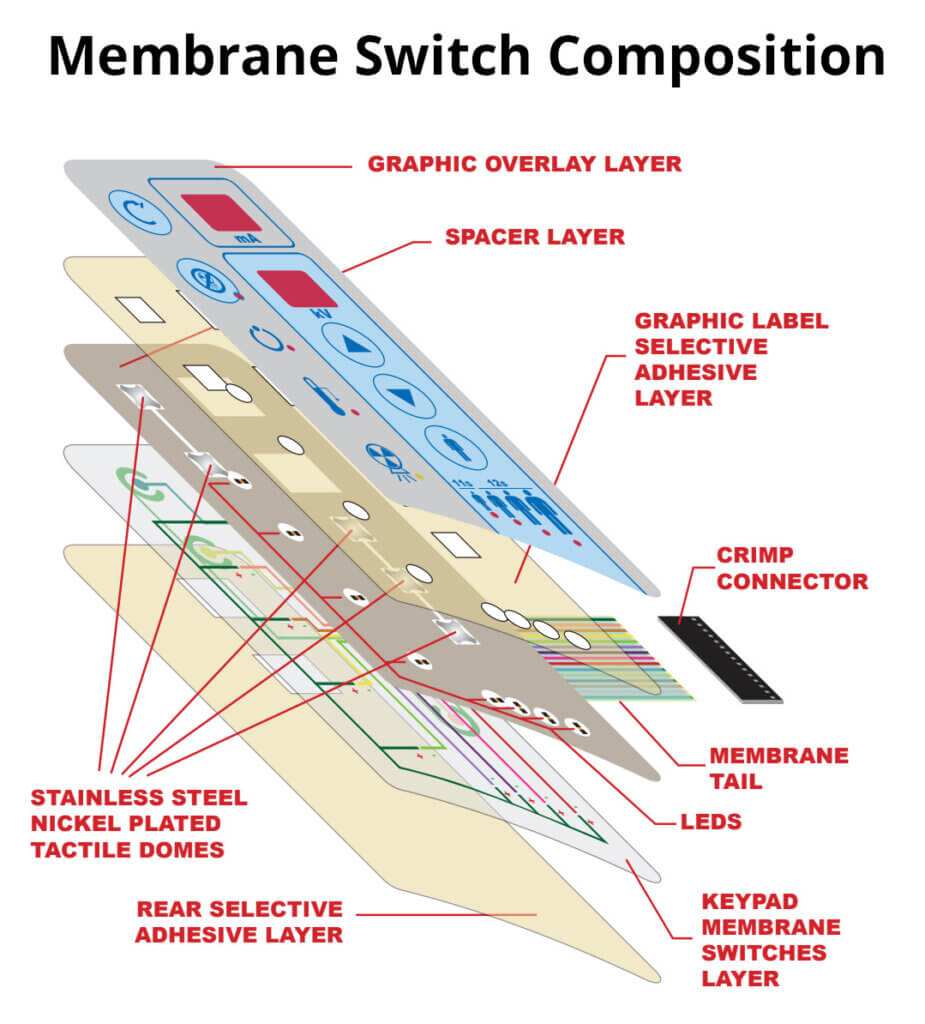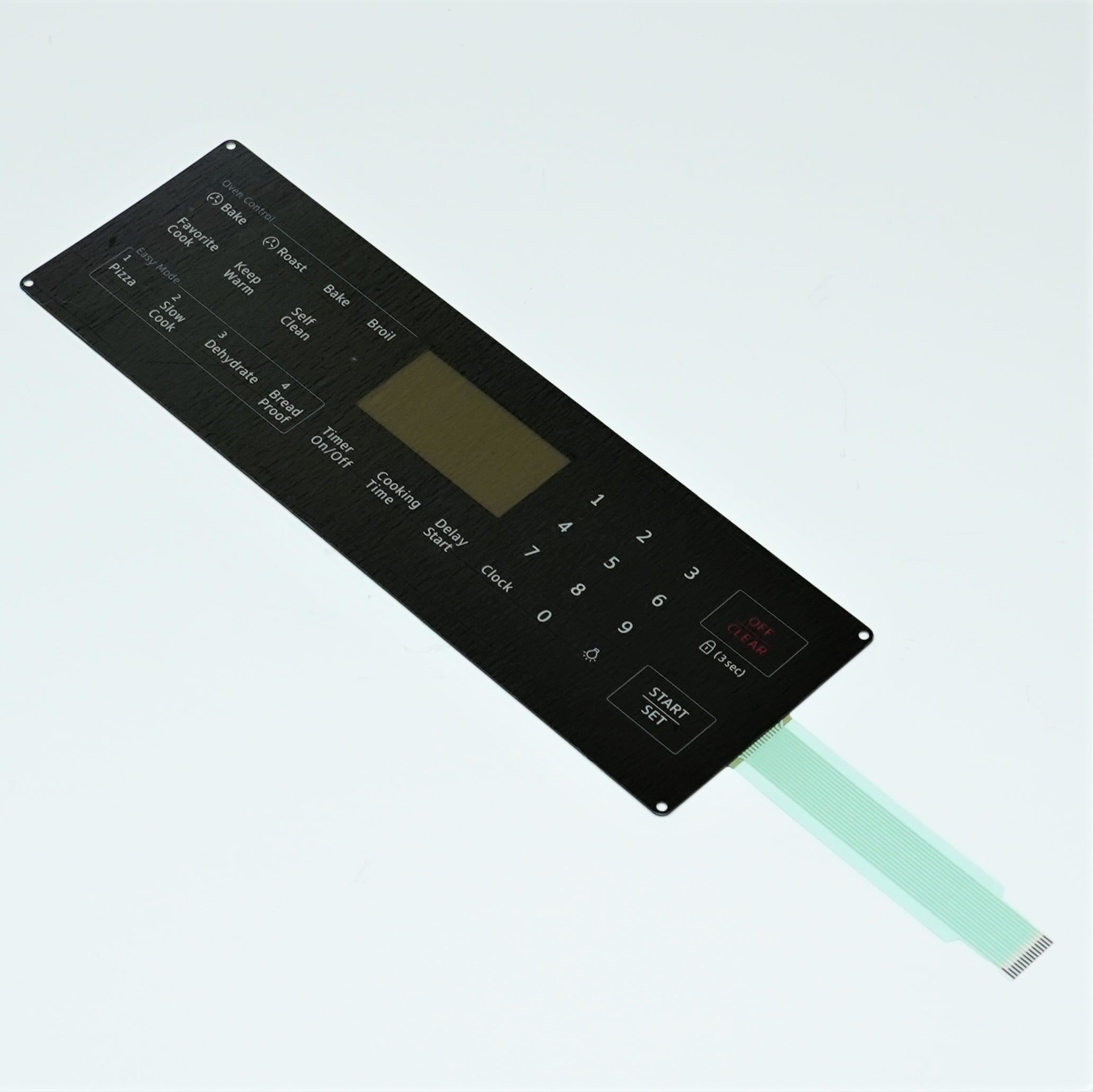Choosing the Right Membrane Switch for Your Business Needs
Choosing the Right Membrane Switch for Your Business Needs
Blog Article
The Benefits of Using Membrane Switches in Customer Electronic Devices
Membrane buttons are significantly recognized for their significant advantages in customer electronic devices, particularly in boosting user communication and improving production procedures. Their capacity to offer intuitive user interfaces and tactile feedback can greatly minimize individual errors, while their lightweight building and simplified manufacturing actions add to cost-effectiveness and quicker market entry. The convenience in design enables for tailored options that fulfill varied consumer needs. Yet, the ramifications of these advantages expand past simple capability, hinting at a transformative capacity for the future of electronic tools. What further advantages might emerge as this technology develops?
Improved User Experience

In today's affordable landscape of consumer electronics, improved individual experience is paramount; nearly 85% of individuals focus on instinctive interfaces. Membrane switches play a vital function in achieving this level of usability.
The tactile feedback offered by membrane layer buttons is essential for directing individual activities, making certain that commands are signed up accurately. This comments system enhances and lessens mistakes customer fulfillment, promoting a favorable partnership between the device and the individual. Moreover, the adjustable nature of membrane changes enables makers to tailor user interfaces to specific customer needs, making gadgets much more available and inviting.
In addition, membrane layer switches can integrate backlighting and visuals overlays, additionally enhancing visibility and usability in varied settings. This adaptability makes sure that tools remain easy to use and practical, despite the setup. In general, the assimilation of membrane layer changes into customer electronics significantly improves individual experience, driving brand name commitment and fulfillment in a significantly open market.
Cost-efficient Production
Customer electronic devices manufacturers are continuously looking for methods to stabilize high quality with price, and membrane layer switches provide an engaging option for economical manufacturing. These elements are inherently easier than traditional mechanical buttons, which lowers both manufacturing expenses and complexity. The light-weight design of membrane switches permits lower shipping expenditures and less complicated assimilation right into portable tools, even more improving their appeal in an open market.
Makers can generate membrane buttons in high volumes, benefiting from economic situations of scale. This automation capacity makes certain regular top quality while substantially decreasing per-unit prices. Additionally, the materials made use of in membrane layer switches, such as polyester and polycarbonate, are typically less pricey than those needed for conventional button modern technologies, adding to general price financial savings.
The manufacturing process for membrane layer changes typically requires less actions and less labor compared to other switch types. This structured approach not just saves on labor prices yet likewise accelerates time-to-market, enabling business to respond quickly to consumer demand. As a result, the combination of minimized material expenditures and reliable production processes positions membrane switches over as a smart investment for suppliers aiming to deliver top quality customer electronics at affordable cost factors.

Style Flexibility and Customization
While conventional mechanical buttons commonly impose restrictions on style as a result of their bulk and required placing devices, membrane switches provide unequaled adaptability and personalization read what he said options for customer electronic devices. This cutting-edge innovation allows developers to create streamlined, inconspicuous interfaces that can seamlessly integrate into numerous item looks, from smartphones to kitchen area devices.
Membrane buttons can be generated in essentially any kind of form or dimension, allowing manufacturers to tailor the design to particular ergonomic and practical needs. This flexibility not only boosts customer experience but additionally permits creative layouts that line up with brand identity. The usage of published graphics on membrane switches provides the opportunity for elaborate designs and dynamic colors, which can be conveniently customized without significant expense implications.
Additionally, membrane layer buttons can include several functionalities right into a solitary layer, minimizing the demand for several elements and streamlining assembly procedures. This structured layout technique lessens area and weight, making it excellent for small customer electronics. Generally, the design flexibility and personalization capabilities of membrane changes encourage suppliers to introduce, ultimately leading to more engaging and straightforward items.
Resilience and Dependability
As technology remains to advance, the durability and integrity of membrane switches have actually ended up being critical considerations for suppliers in the customer electronics industry (membrane switch). Membrane buttons are designed to stand up to severe environmental conditions, consisting of temperature fluctuations, moisture, and dirt direct exposure. Their robust building usually involves multi-layered products that give an efficient barrier versus impurities, guaranteeing durability and constant performance

Additionally, membrane layer buttons can withstand a considerable variety of actuations without loss of performance, often surpassing millions of cycles. This sturdiness converts to decrease substitute expenses and decreased downtime for customers and producers alike. On the whole, the combination of environmental resilience and mechanical reliability makes membrane layer switches a calculated choice for customer electronic devices, guaranteeing that devices stay effective and operational throughout their desired life-span.
Streamlined Item Development
The toughness and reliability of membrane switches considerably contribute to streamlined item advancement in the consumer electronic devices market. By integrating these switches early in the design process, manufacturers can decrease the complexity and number of elements needed in their products (membrane switch). Membrane buttons are compact and Go Here lightweight, permitting for extra reliable room application within tools, which can cause simplified setting up procedures
Moreover, the modification capabilities of membrane switches make it possible for designers to tailor functions especially to consumer needs without incurring excessive expenses or delays. This flexibility cultivates advancement, as companies can rapidly repeat designs based upon market feedback, ultimately increasing the time-to-market for new products.
The simplicity of manufacturing membrane layer switches additionally plays an essential function in product advancement. With modern-day printing strategies and materials, manufacturing can be scaled efficiently, reducing and minimizing lead times waste. This leads to lower manufacturing expenses, improving overall success.
Final Thought
In conclusion, membrane layer changes considerably enhance customer electronics by supplying a boosted user experience, economical production processes, and flexible layout choices. Their sturdiness and reliability ensure regular efficiency in different atmospheres, while streamlined product advancement promotes quicker time-to-market. These benefits jointly add to the advancement and capability of customer devices, resolving the evolving demands of customers successfully. The assimilation of membrane layer switches over represents a strategic choice for suppliers looking for to optimize item layout and performance.
Membrane buttons are progressively acknowledged for their considerable benefits in consumer electronic devices, especially in boosting individual interaction and simplifying manufacturing processes. Furthermore, the products made use of in membrane layer switches, such as polyester and polycarbonate, are commonly much less costly than those required for standard button modern technologies, contributing to general cost financial savings.
The manufacturing procedure for membrane switches typically requires fewer steps and much less labor contrasted to various other switch types. Unlike conventional mechanical buttons, which may use out over time, membrane layer switches make use of a closed style that reduces the risk of mechanical failing.In final thought, membrane layer switches dramatically boost consumer electronics by providing an enhanced user experience, affordable production procedures, and functional design options.
Report this page